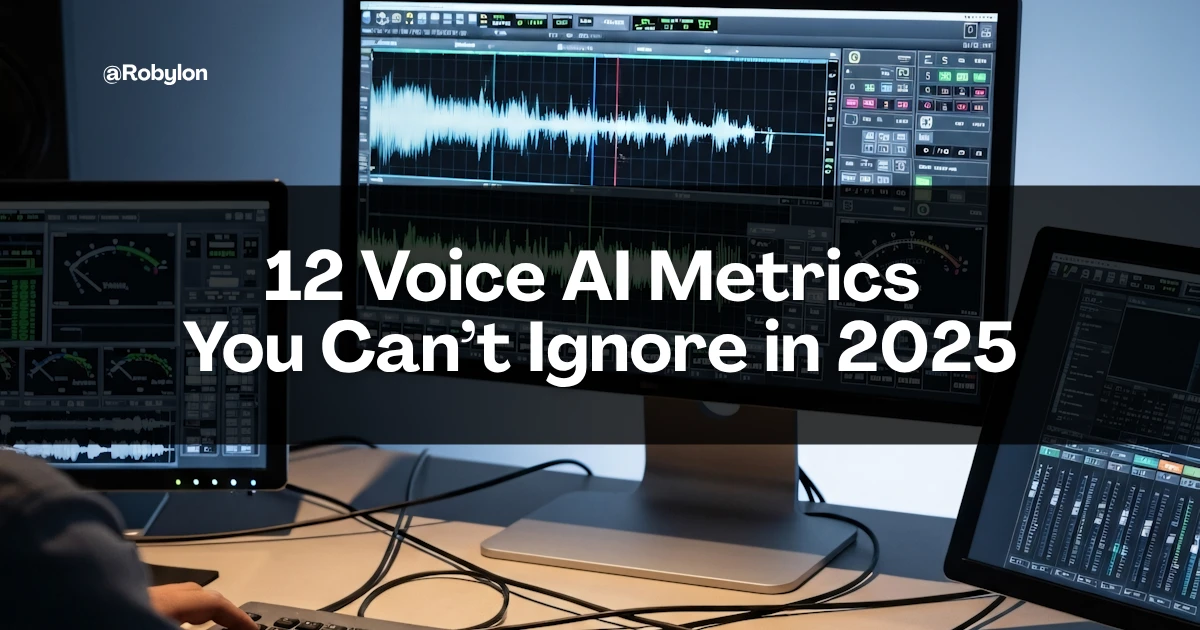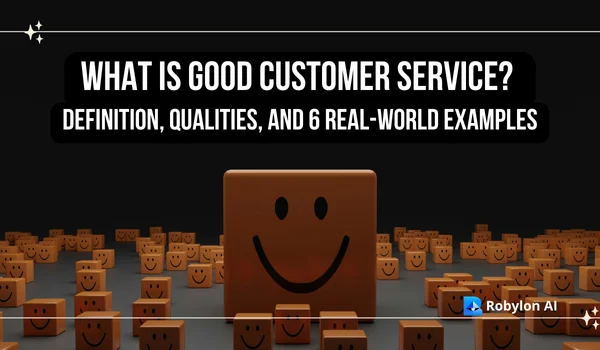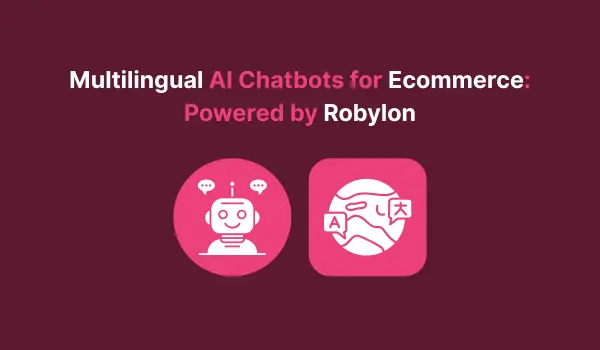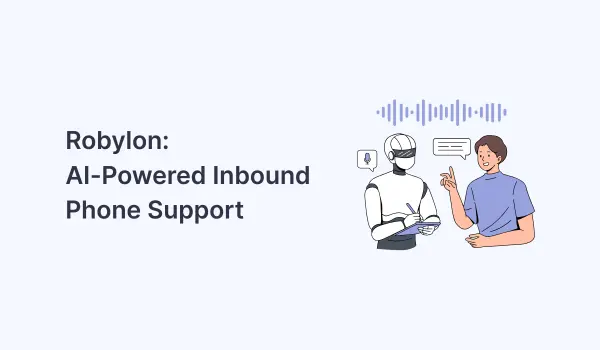TL;DR
To get real value from AI voice agents, contact centers must go beyond deployment and track the right AI call metrics. From semantic accuracy rate and intent recognition to containment, FCR, and cost per interaction, these KPIs show whether your AI is truly reducing costs, improving CSAT, and scaling operations. In 2025, the winners will be those who consistently measure, iterate, and optimize.
Introduction
AI voice agents are becoming the backbone of modern contact centers, handling millions of conversations across industries like banking, healthcare, e-commerce, and insurance.
But here’s the catch: AI without measurement is just automation guesswork. The difference between a mediocre rollout and a business-changing one comes down to which metrics you track and how you act on them.
In this guide, we’ll discuss 12 essential AI call metrics every CX leader must monitor in 2025. These KPIs will help you
- Validate ROI from AI investments
- Improve containment without hurting CSAT
- Spot issues early (before they turn into churn)
- Continuously optimize for efficiency and customer delight
See your own ROI model in action, book a live Voice AI demo.
Why Tracking Call Center Metrics Matters
Call center metrics are more than numbers on a dashboard. They reveal how effectively your team serves customers, how well agents perform, and how efficiently your operations run. Tracking the right metrics ensures customers get quick, reliable support, something they remember and reward with loyalty.
To meet these expectations, call centers must be effective, measurable, and optimized. Tracking the right call center KPIs makes this possible:
- Boost customer satisfaction
Metrics like Customer Satisfaction Score (CSAT) and First Call Resolution (FCR) show if you are meeting customer needs. Monitoring these reduces churn and builds loyalty. - Enhance agent performance
Indicators such as Average Handle Time (AHT) and Agent Utilization Rate highlight efficiency. These insights guide smarter scheduling and targeted coaching. - Optimize operational costs
High AHT or a rising call abandonment rate reveals inefficiencies. By addressing them, companies can cut wasted effort, balance labor budgets, and improve cost-effectiveness.
Top 12 Call Metrics For Successful AI Voice Agents
1) Semantic Accuracy Rate
Semantic Accuracy Rate measures how well an AI voice agent captures the true meaning behind a customer’s words. Unlike word-level accuracy, which only checks transcription, this metric evaluates whether the AI correctly understands the intent and context of what was said. It reflects the agent’s ability to hold natural, meaningful conversations.
Why It Matters?
Low semantic accuracy creates poor experiences even if the transcription is perfect. Misunderstood intent leads to repeated clarifications, escalations, and customer frustration. Industry benchmarks suggest enterprise-grade AI should target 80–85% accuracy at launch and continuously improve toward 90%+.
How to Measure
Take the “number of utterances where the AI correctly captured meaning”, divide by the “total utterances evaluated”, and multiply by 100 to get a percentage.
Inputs needed: Ground-truth labeled set (human validated), Speech-to-Text (STT) transcripts, and NLU/LLM intent outputs
When to Alert
- If accuracy falls below 80%, it’s a red flag for degraded comprehension
- Trigger alerts if drop correlates with specific accents, devices, or languages
Optimization Ideas
- Expand the domain jargon and synonyms
- Use few-shot or fine-tuning for edge cases
- Apply accent and noise augmentation during training
- Regularly refresh test sets with real customer audio
2) Intent Recognition Accuracy
Intent Recognition Accuracy tracks the percentage of customer requests that an AI system correctly classifies into the right intent category (e.g., billing issue, refund request, password reset). This metric shows how reliably the AI can direct conversations toward the right flow or resolution, minimizing confusion and unnecessary escalations.
Why It Matters?
Misclassified intents drive wrong answers and unnecessary handoffs, while accuracy anchors containment and FCR.
How to Measure
Divide “Correctly Predicted Intents” by “Total Intents Evaluated”, and then multiply it by 100. It indicates how well the AI recognizes what customers want.
Data: Human-labeled turns, Speech-to-Text (STT) transcripts, NLU outputs, segment them by language, device, campaign, and contact reason.
When to Alert
- Alert if accuracy drops >3–5 points week over week
- Trigger per-segment alerts for any locale below 85%
Optimization Ideas
- Expand intent taxonomy
- Merge overlapping intents
- Add a few-shot pattern
- Tune confidence thresholds and fallbacks
3) Call Containment Rate (Self-Service Rate)
Call Containment Rate measures the proportion of calls that AI completely handles without transferring to a human agent. A high containment rate means customers are resolving issues through self-service, while a low rate highlights reliance on live support. It reflects AI’s ability to fully resolve problems independently. See how these KPIs tie to pipeline in practice, here’s the call conversion rate uplift from AI outreach.
Why It Matters?
It offers direct leverage for cost savings and scalability; that must be balanced with CSAT and quality.
How to Measure
Calculate “Calls Resolved by AI” and divide that by “Total Calls Handled by AI”, and multiply by 100 to get a percentage.
Data: IVR/VCC logs, transfer flags, resolution tags.
When to Alert
- Alert if containment rises while CSAT drops or
- If escalations spike for the same intents
Optimization Ideas
- Improve tools access
- Add proactive disambiguation
- Fix loops that cause repeat prompts
4) AI-to-Human Handoff Rate
AI-to-Human Handoff Rate shows how often AI calls are escalated to human agents. While some handoffs are necessary, like for identity verification, complex edge cases, or emotional distress, frequent transfers often indicate gaps in the AI’s knowledge base or flow design. This metric helps balance automation with customer satisfaction.
Why It Matters?
High handoff erodes ROI and frustrates users, while low handoff with low CSAT signals unresolved issues.
How to Measure
Divide “calls transferred to human agents” by “total calls handled by AI” and multiply it by 100 to get the percentage.
Track reason codes: Authentication, policy, tools, and emotion
When to Alert
Alert if handoff rate exceeds target by >20% for any intent, or if time-to-handoff surpasses 60–90 seconds.
Optimization Ideas
- Pre-handoff context packets
- Confidence-based routing
- Sentiment-based escalation
- Expand tool actions
5) First Call Resolution (FCR) for AI Agents
First Call Resolution (FCR) measures the percentage of issues that are successfully resolved in a single interaction with AI, without requiring follow-ups or callbacks. A high FCR rate demonstrates that the AI understands customer needs, provides correct solutions, and reduces repeat contact, directly driving customer trust and satisfaction.
Why It Matters?
Correlates with CSAT and costs. High FCR means accurate intent, strong flows, and good tools.
How to Measure
“Issues Resolved on First Contact” divided by “Total Issues Handled by AI” and then multiplied by 100 to get the percentage
Data: Ticketing/CRM, call IDs, repeat-contact windows (e.g., 72h).
When to Alert
Alert if FCR drops >5 points for any top-10 intent or segment
Optimization Ideas
- Improve knowledge snippets
- Add post-resolution confirmations
- Auto-trigger follow-ups for risky intents.
6) Average Handle Time (AHT) in AI Calls
Average Handle Time (AHT) calculates the average duration of an AI-handled call, including greeting, processing, and resolution or handoff. It reflects how efficiently the AI manages interactions. While shorter AHT suggests speed, the metric must be balanced with quality; rushed calls that leave issues unresolved can hurt CSAT.
Why It Matters?
It signals efficiency; must be read with CSAT and FCR to avoid speed-only tradeoffs.
How to Measure
“Total Talk Time + Hold Time + After-Call Work” will be divided by “Total Calls Handled”
Data: VCC timestamps, tool-latency logs.
When to Alert
- The 95th percentile of Average Handle Time (AHT) is more than 10% higher than your target
- AHT has been increasing for three weeks in a row
Optimization Ideas
- Shorten confirmations
- Cache lookups
- Parallelize tool calls
- Introduce smart retries
7) Abandonment Rate for AI Calls
Abandonment Rate measures the percentage of customers who disconnect before the AI completes resolution or transfer. High abandonment often signals slow greetings, long silences, or unclear flows. This metric reflects the very first impression customers get from AI voice agents and is closely tied to satisfaction and retention.
Why It Matters?
It reflects queue pain, latency, and early experience, and it is a strong predictor of churn.
How to Measure
“Calls Abandoned Before Resolution” divided by “Total Calls Initiated” and multiplied by 100 to get the percent.
Exclude very short abandons (e.g., <10s), track by queue and hour
When to Alert
Alert if abandonment >5% sustained or spikes >2x during peaks
Optimization Ideas
- Announce wait times
- Offer callback
- Reduce Automatic Speech Recognition/LLM latency
- Simplify first turn
8) Customer Sentiment Analysis (Voice)
Customer Sentiment Analysis tracks the emotional tone of a conversation with AI, from start to finish. Using voice cues, tone, and post-call surveys (CSAT, NPS, CES), this metric reveals whether customers leave interactions feeling positive, neutral, or frustrated. It provides real-time feedback on how the AI impacts customer experience.
Why It Matters?
It catches frustration early, links emotion to flows, agents, and intents. It compares positive vs negative customer feelings during calls.
How to Measure
“Positive Interactions – Negative Interactions” divided by “Total Interactions” and multiplied by 100 to get the percentage.
Data: Tie to survey outcomes
When to Alert
- On negative sentiment spikes for any flow
- When sentiment and CSAT diverge
Optimization Ideas
- Rephrase prompts
- Add empathy templates
- Insert human check-ins for high-risk turns
9) Cost per Resolved Interaction (AI)
Cost per Resolved Interaction calculates the total cost of running AI voice agents per completed call. This includes infrastructure (STT, TTS, LLM), orchestration, and operational costs. Tracking this metric proves ROI by comparing AI costs against the average cost of a human-handled call, highlighting financial efficiency.
Why It Matters?
It offers a core ROI metric, aligns finance and CX on value delivered
How to Measure
Divide “Total AI Operational Costs” by “AI-Resolved Calls”
Note: Compare with human AHT × cost/min + rework.
When to Alert
- If cost/resolved rises >10% month over month
- Containment falls while cost rises
Optimization Ideas
- Set latency budgets so calls don’t waste compute on long waits
- Use prompt caching to avoid repeating expensive LLM calls for common queries
- Mix vendors smartly (STT/TTS/LLM) to balance cost and accuracy
- Shift heavy tasks to async processing when real-time answers aren’t required
10) AI Call Flow Efficiency
AI Call Flow Efficiency evaluates how smoothly conversations progress toward resolution. It looks at the number of steps, re-prompts, tool delays, and dead-ends in the call. Efficient call flows mean faster resolutions, fewer customer drop-offs, and higher satisfaction, while inefficient flows signal design flaws or training gaps.
Why It Matters?
Inefficient paths inflate AHT, lower CSAT, and cause abandonment.
How to Measure
Track average turns to resolution, re-prompt rate, tool-call p95 latency, and dead-end frequency.
“Efficient Paths (Resolved Without Dead-Ends)” divided by “Total AI Call Paths” and multiplied by 100.
Note: Visualize with heatmaps and path analysis
When to Alert
- If the resolution rises>15%,
- Dead-ends exceed 1–2% of calls
Optimization Ideas
- Prune redundant steps to shorten paths and reduce friction
- Prefill context from CRM or prior interactions to skip repetitive questions
- Batch tool calls were possible to cut down latency and avoid back-and-forth
- Use targeted clarifiers (specific prompts) instead of repeating generic fallback question
How to Choose the Right AI Voice Agent KPIs
Choosing the right voice agent performance indicators is what separates AI projects that deliver measurable value from those that stall after launch. With hundreds of possible conversational AI metrics, the challenge is not collecting data; it is identifying which numbers truly matter to your business. Plot the right baselines and avoid common rollout mistakes that skew KPI trends.
The right KPIs for AI voice agents do three things
- Align with business goals
- Provide clear visibility into customer outcomes
- Support continuous optimization through consistent benchmarking
How Robylon Could Help Reshape Voice AI in Call Centers
Most contact centers struggle with two big challenges: scaling automation without hurting CSAT, and proving ROI from AI investments. That’s where Robylon steps in. Here’s how we are helping enterprises in 2025
- AI Agents that Learn Continuously – Our models adapt to accents, noise, and evolving intents, keeping semantic accuracy and intent recognition rates high
- Seamless Escalation Flows – We optimize AI-to-human handoffs by passing context packets, so customers never repeat themselves
- Measurable ROI – With advanced analytics, we track cost per resolved interaction and call reduction rates, making it easy to show finance teams the value
- Customer-First Design – Every flow is built with CSAT, NPS, and sentiment analysis as core guardrails, ensuring automation never sacrifices empathy
We are building the metric-driven foundation for the next generation of contact centers. Book a demo to know more.
Conclusion
In 2025, success with AI voice agents won’t come from who has the flashiest demos; it will come from who measures relentlessly. Tracking the 12 call metrics we have outlined, like semantic accuracy, containment, FCR, AHT, and cost per interaction, ensures your AI is not just running, but running with purpose.
The takeaway? What gets measured gets improved. If you want AI voice agents that cut costs, boost satisfaction, and scale effortlessly, make these KPIs a daily habit.
FAQs
What are voice AI metrics vs regular call center metrics?
Voice AI adds semantic accuracy, intent accuracy, flow efficiency, LLM/ASR latency, and handoff reason codes to classic contact center metrics like FCR, AHT, CSAT, NPS, and abandonment.
What is the difference between call containment and transfer rate?
Containment rate is the share of calls resolved by AI with no humans. Transfer (handoff) rate is the share of calls moved to a human. They are related but not inverse if calls can end for other reasons (for example, abandonment).
Does AI reduce average handle time?
Often yes, especially for well-defined intents. Track AHT alongside CSAT and FCR to ensure time savings do not harm outcomes. Optimize with better tools, cached lookups, and concise confirmations.
How much cost per resolution can AI reduce?
Measure cost per resolved interaction (AI) vs human handling. Savings come from higher containment, lower AHT, and fewer repeats. Many teams target 20–40% unit cost reduction once scaled, depending on intent mix and compliance needs.
How do you measure semantic accuracy in voice AI?
Formula: Correctly understood utterances ÷ total utterances × 100.
Use a human-labeled truth set, STT transcripts, and NLU outputs, then segment by language, device, and contact reason.
Which KPIs matter for AI in customer service?
Top AI voice agent KPIs: containment, FCR, semantic accuracy, intent accuracy, handoff rate, sentiment, abandonment, AHT, and cost per resolution. These align with experience, efficiency, and ROI.
What metrics should I track for AI voice agents?
Track these core AI call metrics: semantic accuracy rate, intent recognition accuracy, call containment rate, AI-to-human handoff rate, first call resolution (FCR), average handle time (AHT), abandonment rate, customer sentiment, escalation rate, cost per resolved interaction, call reduction rate, and AI call flow efficiency.

.png)




.webp)



.webp)














